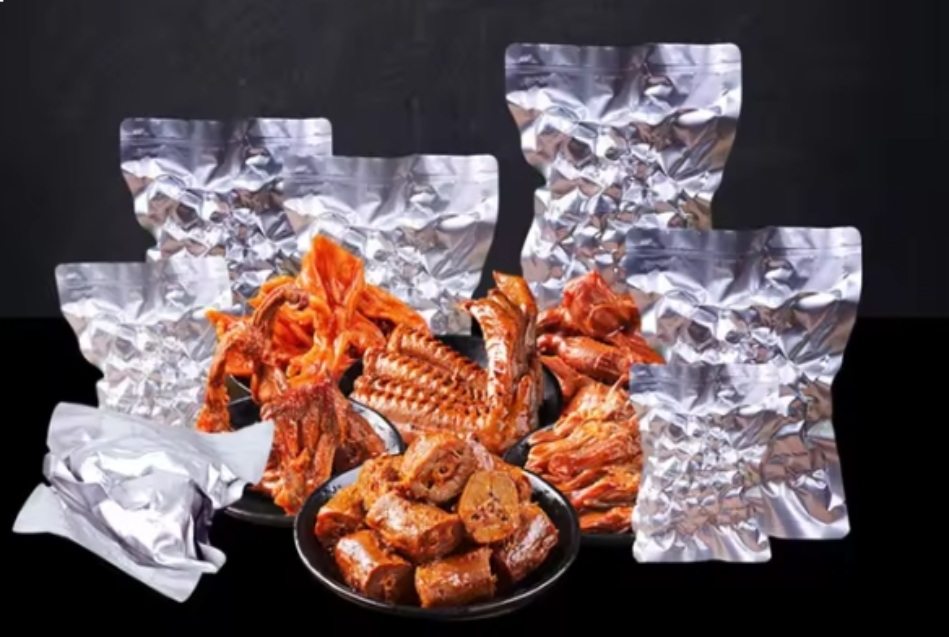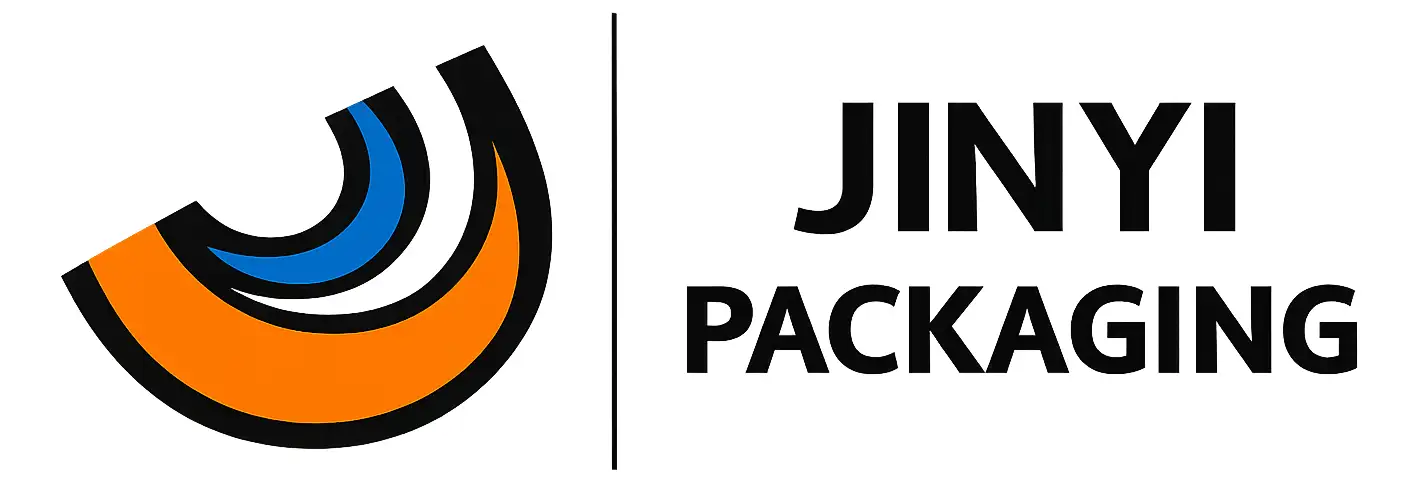How High Barrier Films Extend Shelf Life
Home » Technical-News » How High-Barrier Films Extend Shelf Life — A Key to Freshness in Food and Pharma Packaging

Introduction: The Essential Role of High Barrier Films
The global food and packaging industries continue to evolve at breakneck speed. Consumers demand freshness, brands need reliability, and regulations demand safety. In this scenario, high barrier films have emerged as indispensable tools in extending shelf life, preserving quality, and improving sustainability. Especially for perishable goods—such as meats, cheeses, coffee, and frozen meals—these advanced materials provide unmatched protection against oxygen, moisture, light, and aroma loss.
At Jinyi Packaging, we engineer multilayer film structures that offer tailored performance for specific food requirements while adhering to global compliance. This article sheds light on the science behind high barrier films, their benefits, application areas, sustainability developments, and why they’re vital to modern food supply chains.
1. What Are High Barrier Films?
1.1 Definition and Purpose
High barrier films are engineered multilayer packaging materials designed to dramatically reduce the transmission rate of gases (oxygen, nitrogen), moisture, aroma, and UV light. These materials are essential for maintaining freshness and extending the useful life of food products beyond what is feasible with conventional packaging.
Key performance indicators include:
OTR (Oxygen Transmission Rate): Measured in cc/m²·day
WVTR (Water Vapor Transmission Rate): Measured in g/m²·day
Optical Light Barrier: UV and visible spectrum protection
Mechanical Strength: Resistance to puncture, tear, and abrasion
1.2 Typical Structures and Materials
High barrier films are composed of multiple functional layers:
| Layer Combination | Function |
|---|---|
| PET/AL/PE (Foil-backed) | Excellent oxygen & light barrier |
| PA/PE or PET/CPP | Balance of strength and sealability |
| EVOH sandwich (PE/EVOH/PE) | Outstanding gas barrier, recyclable |
| BOPP/CPP with barrier coating | Cost-effective moisture barrier |
By selecting and configuring these layers precisely, packaging can be tailored to preserve freshness for specific food categories.
2. How Do High Barrier Films Extend Shelf Life?
The core advantages of high barrier films lie in four pillars:
2.1 Oxygen Protection
Oxygen accelerates lipid oxidation, causing rancidity and off-flavors. High barrier films reduce OTR to near-zero, momentarily halting these reactions and preserving taste, texture, and appearance.
2.2 Moisture Retention and Protection
Moisture exposure leads to spoilage, microbial growth, and freezer burn. Low WVTR ensures that sensitive products—like crackers, coffee, and dried herbs—retain crispness and aroma, while frozen goods are guarded against dehydration.
2.3 Light Radiation Shielding
UV radiation not only degrades vitamins but can also catalyze chemical reactions. Foil-backed and metallized barrier films effectively protect against UV-induced damage, preserving nutrients and aromas.
2.4 Aroma and Flavor Preservation
Volatile compounds crucial to flavor and fragrance can escape through generic films. High barrier laminate builds maintain selective permeability to preserve taste and scent profiles.
3. Common Applications of High Barrier Films
3.1 Meat, Poultry & Seafood
Fat-rich meats are highly vulnerable to oxidation and microbial contamination. Vacuum or MAP (Modified Atmosphere Packaging) pouches with PA/AL/PE structures keep contents fresh and visually appealing far longer than alternatives.
3.2 Cheese and Dairy
Fresh cheeses, aged varieties, and sliced cheeses all benefit from high barrier films that protect against moisture loss, mold, and aroma fading.
3.3 Coffee and Tea
Coffee bags with degassing valves require oxygen-impermeable liners (e.g., PET/AL/PE) to trap roast freshness and prevent oxidation.
3.4 Frozen and Ready Meals
Meal pouches that endure freezing and heating require stable multilayer films with good seal integrity—barrier layers over 100 µm in thickness are commonly employed.
3.5 Ready-to-Eat Snacks
Cereal, confectionery, dried fruits, and nuts all rely on low moisture barrier packaging to preserve texture and crunch.
3.6 Sauces, Condiments & Liquids
Retort or boil-in-bag applications demand high barrier and heat-stable laminates to protect sterilized food products.
4. Comparing High Barrier vs Regular Films
Here’s how they break down:
| Feature | Regular PE/BOPP Films | High Barrier Films |
|---|---|---|
| OTR & WVTR | Moderate to high | Extremely low (near zero) |
| Shelf Life Extension | Days to weeks | Weeks to months or even years |
| Cost per sq cm | Low | Moderate to high |
| Degradability | Easier to recycle | Recycling complexity |
| Functional Benefit | Basic protection | Advanced preservation and quality |
Although more costly, high barrier films can generate superior returns by enhancing shelf life, reducing spoilage, and improving consumer satisfaction.
5. Sustainability in High Barrier Film Development
5.1 Toward Recyclability
Traditional barrier laminates (e.g., PET/AL/PE) are complex to recycle. Kamikaze initiatives are underway to promote mono-material alternatives such as EVOH barrier in PE (PE/EVOH/PE). Some producers are piloting separation technologies (like delamination) to enable film recyclability.
5.2 Lightweighting
Technological advances allow thinner film layers without performance loss, cutting plastic use, weight, and cost per pack.
5.3 Plant-Based & Compostable Options
Research into bio-based barrier films like PLA/EVOH is underway. While not yet suitable for moist or fatty foods, they serve dry goods well.
5.4 Green Manufacturing
At Jinyi Packaging, manufacturing technologies reduce VOC emissions, collect and recycle trim waste, and employ energy-efficient lamination and printing equipment.
6. Manufacturing and Print Considerations
6.1 Printing on High Barrier Films
High barrier films must be printed on high-quality gravure or flexo machines with proper drying and corona treatment. Jinyi Packaging delivers high-resolution prints with vibrant color fidelity.
6.2 Heat Sealing Integrity
Temperature, dwell time, and pressure calibrations are critical in lamination. Jinyi provides ISO-calibrated systems to validate seal strength and prevent leak failures.
6.3 Testing & Certification
SGS certification includes barrier tests, migration analysis, seal integrity, UV light exposure, and shelf-life trials—ensuring compliance with FDA, EU, GB, and other global standards.
6.4 Traceability & Batch Coding
Packaging films are traceable to material batches and production runs. Lot numbers and date codes are printed directly to help comply with food safety audits.
7. Real-World Case Studies
A. Frozen Seafood Export
A Southeast Asian seafood exporter shifted to PET/AL/PE vacuum pouches and saw shelf life extend from 6 months to 12 months—cutting spoilage rates by more than 40% during cold chain transit.
B. Premium Coffee Launch
A craft coffee roaster adopted PET/AL/PE barrier pouches with degassing valves and matte finish. The brew remained fresh for 6 months, supported by customer reviews—and sales more than doubled.
C. Cheese Export to EU Markets
A dairy cooperative started using EVOH barrier laminates with high-gloss prints to maintain aroma and texture during transcontinental shipping. EU retailers praised the packaging for both form and function.
8. Choosing the Right High Barrier Film
8.1 Assess the Product Needs
High-fat items: choose foil or EVOH laminate
Dry products: PA/PE or PA/PP combos often sufficient
8.2 Matching Film Structure to Use Case
Film thickness and structure (AL vs EVOH) must align with shelf life, temperature, and handling. Consultation becomes critical here.
8.3 Custom Printing and Branding
Colorful branding prints, matte/gloss finishes, window panels, and peel-off seals should be tailored to brand identity.
8.4 Regulatory Compliance
Certification to FDA, EU Regulation 10/2011, China GB4806, and traceability coding should be standard.
8.5 Sustainability Preferences
Brands targeting eco-conscious consumers can opt for recyclable monolayer laminates or biodegradable barrier alternatives.
9. The Future of High Barrier Films
9.1 Fully Recyclable Formats
Firms are developing PE/EVOH/PE designs with easy rinsing and recycling capability.
9.2 Biodegradable Laminates
Advances in PLA/EVOH structures may emerge for dry good barriers by late 2020s.
9.3 Active and Smart Barriers
Antimicrobial agents or freshness indicators may be embedded in films—we may soon open a pack and instantly detect spoilage.
9.4 Nanotechnology Barriers
Nano-coating and thin-film alumina layers hold promise in reducing film thickness while maximizing barrier.
9.5 Blockchain for Material Origins
Consumers may be able to scan film and trace full ingredient and production history—adding trust and transparency.
10. Why Choose Jinyi Packaging
✅ Custom High-Barrier Solutions
From PET/AL/PE to EVOH/PE, Jinyi offers tailored film structures based on product needs.
✅ Advanced Printing Tech
We specialize in gravure, flexo, and digital printing, including matte, gloss, thermal-release, and graffiti finishes.
✅ Certification and Quality Assurance
SGS-inspected barrier values, traceability systems, and compliance documentation for major export markets.
✅ Sustainability Initiatives
We operate solvent-free lamination, recycle production waste, and offer lightweighting optimization to reduce carbon footprint.
✅ Global Logistic Support
From packaging design phase to export, we assist with Certified of Origin (CO), FDA/EU lab reports, and customized labeling.
Conclusion: High Barrier Films Amplify Freshness and Brand Trust
In a world where freshness, transparency, and sustainability define consumer choice, high barrier films are indispensable. They preserve quality, cut waste, and convey brand promises with every sealed pouch.
At Jinyi Packaging, we bring engineering precision, creative design, and regulatory excellence to every high barrier film application. Whether you’re launching a premium coffee, exporting seafood, or extending cheddar cheese shelf life, our high barrier packaging will safeguard quality—today and well into the future.
🌟 Ready to elevate your food packaging?
📩 Contact Jinyi Packaging for a customized evaluation, performance samples, or project consultation.
Internal and External Links
Related Pages (Internal)
Authoritative References (External)
Food Packaging Forum: Barrier Materials
European Food Safety Authority–Packaging Materials
ASTM and ISO standards on gas & moisture transmission

